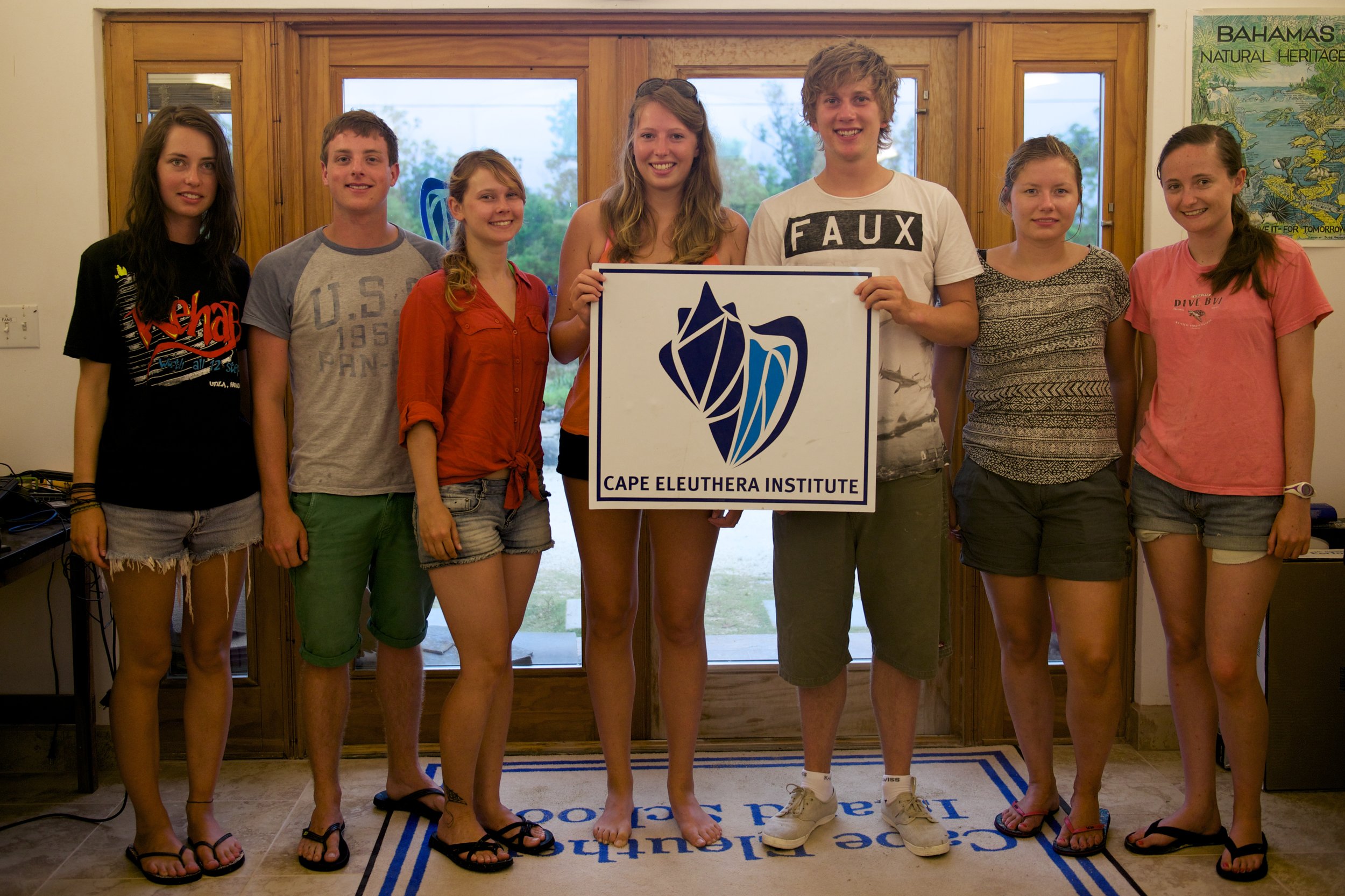Seven undergraduate students from Newcastle University have been on campus since July 1, assimilating with various research groups at CEI. Each student is working on an individual project for their undergraduate thesis. Click below for a summary of the projects:
Rey: I have been collecting size and abundance data on the queen conch populations in the area, using both snorkel and SCUBA methods. I am doing this in order to assess the status of the fishery around South Eleuthera as well as to see if there has been an effect on the abundances of both shallow and deep populations by increased fishing pressures. Hopefully, this data can be used by the Bahamian government to establish Marine Protected Areas in order to protect this rapidly declining species.
Lucy: I am looking at the effects of longline hook duration on the physiological and behavioural stress responses of the Caribbean Reef shark (Carcharhinus perezi). The objectives of this study are to analyse data from Caribbean Reef sharks caught on longlines, analyse the physiological and behavioural responses and then establish any relationships between hook duration, secondary responses and behaviour. I will do this by looking at the blood chemistry and data from an accelerometer.
Georgina: I am working with the Shark Team at CEI to collect data for my undergraduate research project. I am presently researching the inter- specific and inter- gender variation of the secondary stress response to hook duration associated with long- line capture in elasmobranchs.
Katie: My project is looking at the spatial and temporal variation in larval settlement and recruitment of reef fishes in the Bahamas, over the spring and summer months. I am comparing two different benthic habitats, patch reef and continuous reef. ‘Standard monitoring units for the recruitment of fishes’ or SMURFs are being used to collect samples. Hopefully the data collected will increase the understanding of larval settlement and the processes that influence recruitment; this data may be of great value in the future when assessing coral reef biodiversity.
Dan: My project is looking at how the functional response of the invasive lionfish (Pterois volitans) changes at different prey densities. I am using two different types of prey species, the Yellowfin Mojara (Gerres cinereus) and the Tomtate (Haemulon aurolineatum). The data I collect will also show if the functional response differs with different species of prey.
Laura: In this project I am looking at the effect of creek fragmentation and the differences of faunal species abundance between Page and Kemps creek. This project will be the first step towards the aim of creating a water and fish passage to reconnect both creeks and to rebuild the original ecosystem.